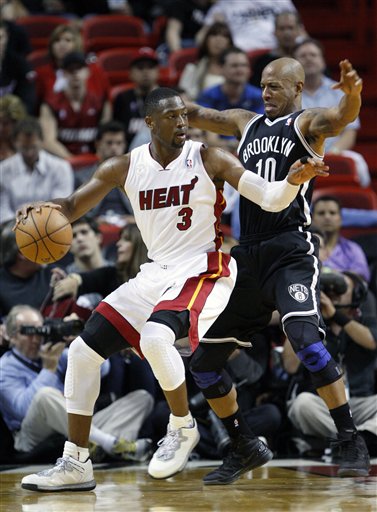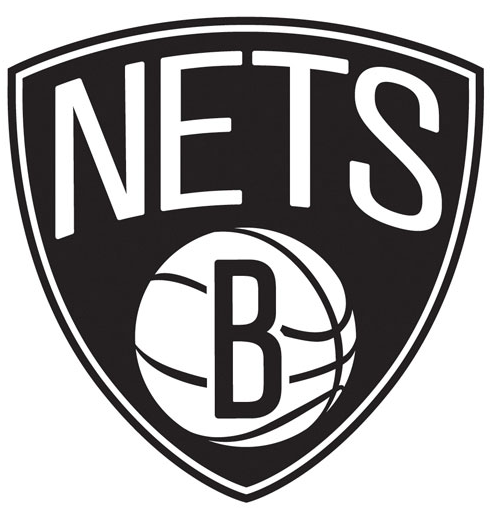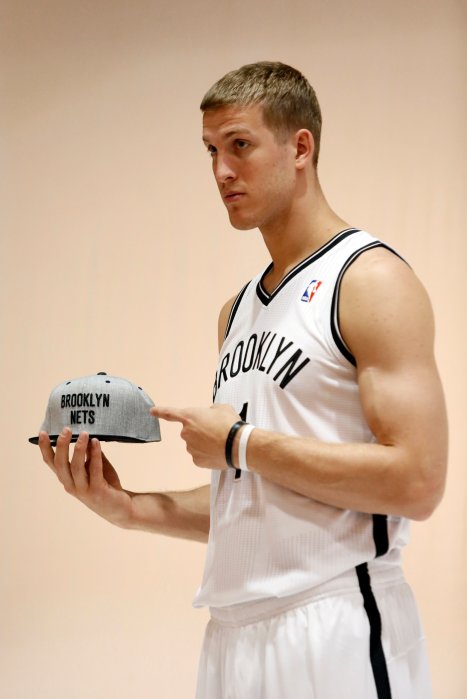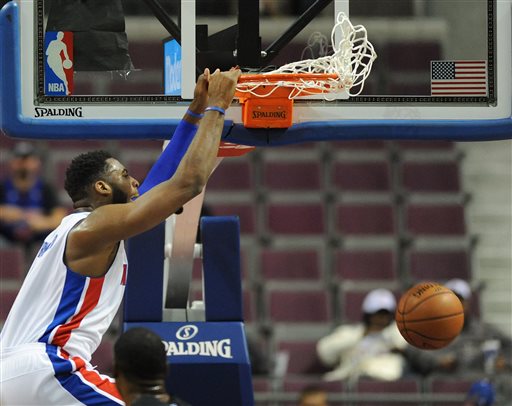
In a superstar-driven league, players like Brooklyn Nets backup shooting guard Keith Bogans often come and go with nary a second look. On one of the highest-profile, media-frenzied franchises in all of professional sports, Bogans doesn’t put up flashy numbers, doesn’t have a notable contract or a famous entourage, and as the classic journeyman, Bogans normally slips out without so much as one recorder shoved in his face for a post-game quote or discussion at practice.
(In fact, when I approached Bogans to speak with him, he looked quizzically at me. “What’s this about?”)
Even with his lack of notoriety, Bogans is a leader in the Nets clubhouse, if for no other reason than he holds the de facto team’s leader, max contract point guard Deron Williams, accountable for everything. “I’m probably one of the only ones that gets on his ass about everything,” Bogans, who occupies the closest locker to Williams in the Nets locker room, joked. “So I think he appreciates that. I think we all need it, but I give it to him a little more than everybody else. … When I first got here, I took a liking to Deron. We’re cool. We never even argued on the court before.”
On a team boasting Williams, six-time All-Star Joe Johnson, and Brook Lopez, Bogans has been a presence both on and off the court since he first joined the team last year, maintaining that presence even after playing just five games before succumbing to a broken foot against the Detroit Pistons. Even though Chicago Bulls coach and former mentor to Bogans Tom Thibodeau wanted him back in Chicago, he always knew he wanted to return, even joining the team on the sidelines at games in a walking boot after the Nets waived him.
“When I got here, I was looked at as a leader for those five games,” Bogans said. “Then when I actually broke my foot, before I even had surgery, I remember reading a quote saying that ‘Bogans will be ready for training camp,’ not even knowing if I would come back here or not. so that let me know.”
Despite Bogans’ paltry numbers — just 3.7 points per game on 38.8% shooting, 33.3% from deep — one surprising trend has emerged from Bogans’ time in Brooklyn: he plays far better when in the starting lineup, and curiously enough, the team plays far better when he plays with its best players. In 19 games off the bench, Bogans has shot just 32% from the field, and 26% from beyond the arc. But in his 14 starts, those numbers skyrocket — 44% from the field, and 39% from deep. Before Wednesday night’s debacle against Atlanta — an 0-6 shooting night, all from three-point range, as the Hawks blew out the Nets — those numbers were at 47% and 44%, respectively.
Bogans is truly a paradox; a bench player best suited to play with the team’s starters. With Bogans on the floor, Deron Williams shoots 42% from three; with Bogans off the court, that number drops to 28%. The team is 2.4 points per 100 possessions better when Bogans is on the court with Williams than when Williams is on the court without him. Of the team’s four-man combinations with at least 100 minutes played, Bogans is involved in five of the team’s best six combinations. The most effective? Bogans, Brook Lopez, Gerald Wallace, and Williams. The third-most effective? Bogans, Kris Humphries, Joe Johnson, and Williams. Fourth? Bogans, Johnson, Lopez, and Wallace. Fifth? Bogans, Humphries, Johnson, Lopez. Sixth? Bogans, Humphries, Lopez, Williams. Bogans is the common link.
I told Bogans about this, and though he didn’t seem to know it beforehand, he also didn’t seem fazed in the slightest by the info. Like Reggie Evans, who famously said before the season that he “ain’t tryin’ to score,” Bogans knows that the team doesn’t need him to create his own offense, and he knows how to play off the team’s best players. “I know my role. I never get out of my role. I’m not a guy that demands the ball. I’m going to take my shots when they come. We got a lot of big guns when I’m out there on the floor with those guys. I just bring energy, play defense, and take my shots. ”
Bogans is an undeniably limited player; he, in effect, does two things well: shoot three-pointers, particularly from the left corner, and display an understanding of the team’s defensive concepts. He’s honed both of those skills over time, and gives credit to his work with Thibodeau for the latter.
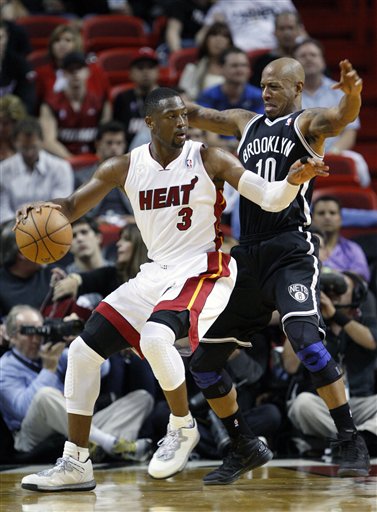
“Now I’ve developed habits,” Bogans continued. “Talking on defense. Little things I didn’t do at first. After playing with (Thibodeau), I’ve definitely taken it on, brought it here and tried to share it with the guys. Communicating and trusting each other on defense is the two main things you’ve got to have.”
Defense aside, Bogans relishes in his reputation as a threat from outside. “I can hear the opposing team saying shooter, so if you’re a shooter and — I mean, my favorite spot of course is the corner. When the ball swings around, the spot I’m in most of the time is the corner, so that’s the shot I work on the most.”
I ask him if it feels good to hear the opponents call ‘shooter!’ with him on the floor. He smiles. “Oh, definitely. definitely. To have put the work in feels good. … They know if they get me a few shots, my man has to stay at home so they can go one-on-one. I’m starting to develop that trust with (the team) on the offensive end, they throw me the ball when I’m open because they think I’m gonna make the shot.”
Bogans perhaps feels best about the fact that he’s even playing at all. After sustaining a torn deltoid ligament and a fractured left ankle on the same play last season, while trying to contest a dunk from Pistons center Greg Monroe, his chances of returning to the NBA were under severe doubt. “It was tough,” Bogans undersells. “For them to tell me that they didn’t know if my injury was career-ending or not, that was a wake-up call.”
Bogans could’ve packed his bags, gone to his summer home in Florida, and contemplated retirement, but that was never on his mind. He always wanted to rehab here in the New York area after his surgery. Bogans biked, hiked, swam in an Olympic-size pool every day, and focused on exercises that wouldn’t put any excess weight on his repairing ankle. “I’ve never worked like that my whole career,” Bogans said of the offseason training. “Just trying to get my body in the type of shape that I’d never been in.”
It was that rehab time that cemented his decision to return. “Coming in, seeing the guys, seeing (Nets GM) Billy (King), definitely made me want to be back here, without a doubt.”

